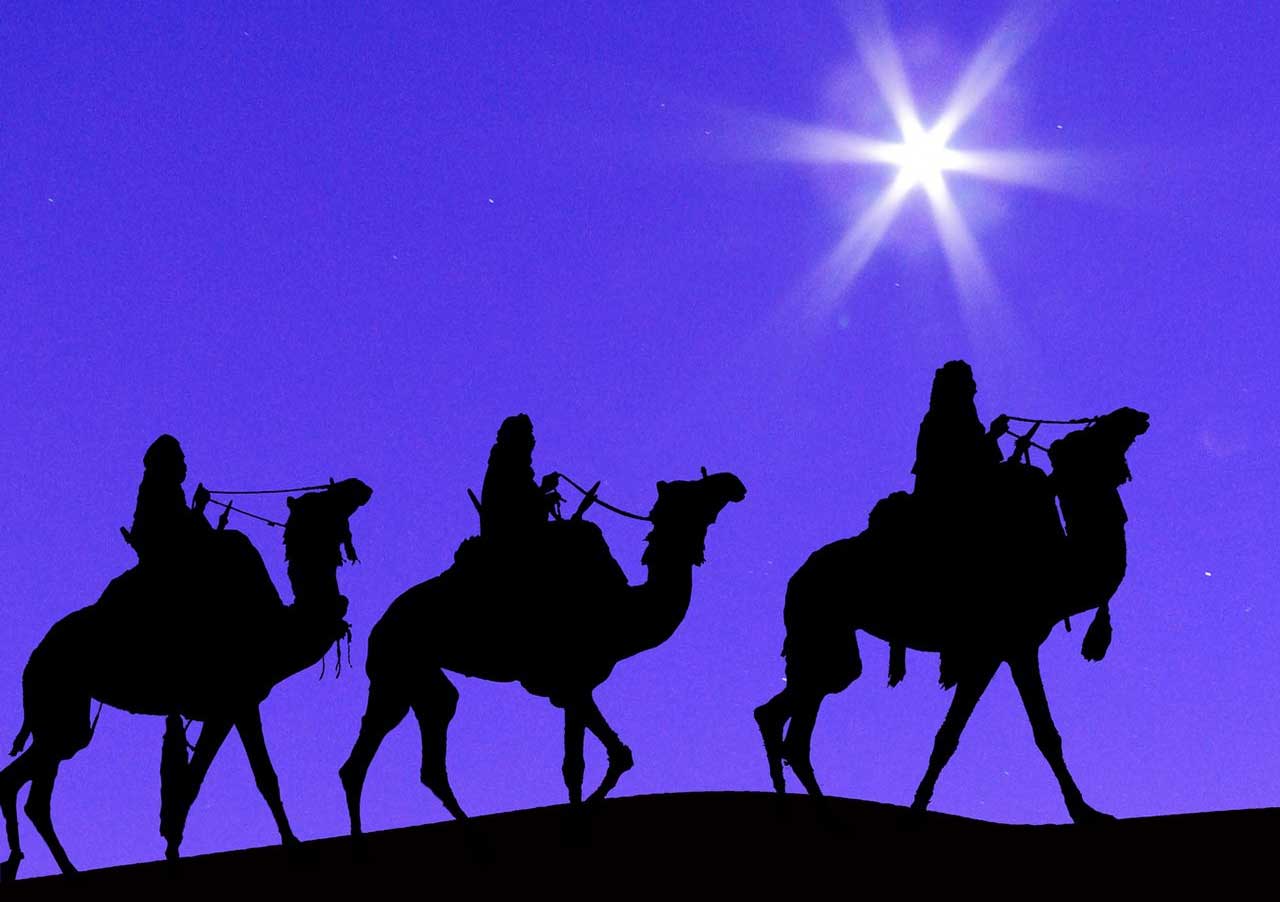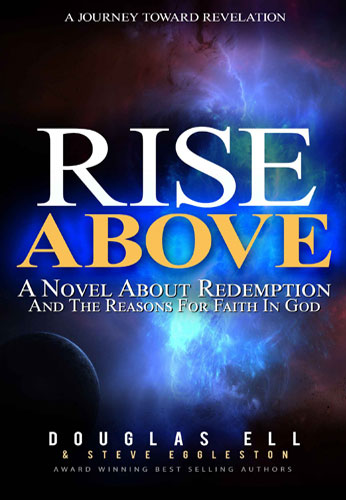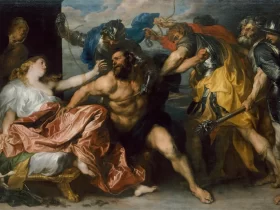This is one of my favorite lines in the Bible. Only in recent years, with modern computers and a fuller understanding of ancient texts, can we understand its power.
It appears in the second chapter of the Gospel of Matthew, which begins:
“Now after Jesus was born in Bethlehem of Judea in the days of Herod the King, behold, wise men from the east came to Jerusalem, saying ‘Where is he who has been born king of the Jews? For we saw his star when it rose and have come to worship him.’”
This is the story of the Star of Bethlehem. The word translated above as “behold” means pay attention, you are about to read something important.
Who were these “wise men,” these Magi? From Marco Polo we learn they came from Saba, now called Saveh, about 60 miles southwest of modern day Tehran:
“In Persia is the city of Saba, from which the Three Magi set out… and in this city they are buried, in three very large and beautiful monuments, side by side. And above them there is a square building, beautifully kept. The bodies are still entire, with hair and beard remaining.” Marco Polo 1299 AD
The Magi were a priestly order of elite, royal Persian scholars. They were masters of astronomy and doubtless many other subjects. They could have been, at least partially, of Jewish descent, and they were certainly familiar with the Hebrew prophecies of a Messiah. Daniel, who survived the lion’s den, was head of this order five centuries earlier. The Magi came from the Parthian Empire, an empire that lasted close to 500 years, and was at the time of Jesus’ birth a formidable if not equal counterpart to Rome. The Parthians defeated seven Roman legions in 53 BC in the battle of Carrhae, one of the worst defeats in Rome’s history. Around perhaps 37 BC they forced Herod to flee to his fortress at Masada. It is now 2 BC, and an uneasy peace prevails. Yet these royal scholars have traveled 1200 miles, by camel, over mountains, without an army, to Jerusalem.
Why? The answer comes from modern computers, which tell us with precision how the sky appeared from any point on earth at any time in history. Modern computers tell us that about 15 months earlier, in September of 3 BC, there was a spectacular triple conjunction of Jupiter (known to the ancients as the “King Planet”) and the star Regulus. The Babylonians called this star “Sharru,” meaning “the King”, and Regulus was also known as the “King” star by the Romans. Jupiter passed Regulus three times, and traced a crown above it. Regulus is the brightest star in the constellation of Leo the lion. The Bible in different places compares the Israelite Tribe of Judah, the tribe of King David and Jesus, with a lion. This triple conjunction of the two kings happens only twice in every 83 years.
On September 11, 3 BC, as the triple conjunction begins, the Sun rises with behind it (an experienced astronomer would know this) the womb of the virgin in the constellation Virgo. At the foot of the Sun is a slim crescent moon. The Sun appears here only one day every year, and the moon has this shape one day each lunar cycle (29 days), so this combination is a very rare event. All signs point to the coming birth of a King in Judah. This could be the date of Christ’s conception, where the Angel Gabriel appears to Mary. Remember that planets in those days were thought of as wandering stars, because they appeared to move around the heavens. Compare this also to John’s vision in Revelation 12:1-2:
“And a great sign appeared in heaven: a woman clothed with the sun, with the moon under her feet, and on her head a crown of twelve stars. She was pregnant and was crying out in birth pains and the agony of giving birth.”
And then it happened. The greatest event in history. On June 17, 2 BC, nine months after the Jupiter/Regulus conjunction, the King Planet Jupiter joined the planet Venus, universally associated with femininity, in conjunction. The planets were so close they appeared to the naked eye to be touching. It was the brightest “star” anyone alive had ever seen. It is visible for an hour after sunset. Such an event has only occurred three times in the 2,000 years since, and the other occasions were not visible in the Middle East. This conjunction took place in the constellation of Virgo the Virgin. Jesus is born. The sacrificial “lamb of God” is born in Bethlehem, which is where sacrificial lambs were bred and born for the Temple at Jerusalem. Jesus is born in the early summer, not winter, and the shepherds who cared for those lambs were out in the warmer weather sleeping with the flocks during birthing season.
The Magi are stunned. All the signs, and doubtless there could have been others not mentioned here, point to the birth of a great king of Judea, perhaps the long awaited Messiah. The Magi decide to make the dangerous journey to find out. They need months to prepare, and 1200 miles by camel probably took at least two months. As they traveled Jupiter stayed ahead of them in the Western sky, pointing the way.
They arrive in Jerusalem in late December, 2 BC. (Computers also tell us that Jupiter went into retrograde motion, or “stopped,” on December 25, 2 BC, when the Magi arrive in Bethlehem and present gifts, the first Christmas.) The Magi ask “Where is he who has been born king of the Jews?” They put this to King Herod. (You may read that Herod died in 4 BC, but the original copies of Josephus place his death at 1 BC, after the birth of Jesus.) This is Herod the Great, who had at least two of his own sons killed because he was afraid they might take his throne.
Imagine the irony. The Magi walk into the court of one of the most murderously paranoid rulers in all history, and ask to see the new king. They claim they “saw his star when it rose.”
Why? The Jupiter/Venus conjunction appeared in the West, shortly after sunset. Why do the Magi say they saw it in the East, “as it rose”? I think only one reason. The Magi are showing off; they are bragging. They are saying that, because of their advanced knowledge of astronomy, they knew the Jupiter/Venus conjunction would take place, and they knew exactly where to look for it rising in the morning sky. The conjunction was bright enough to be visible in daylight, if you knew where to look. The Magi are bragging, they are demonstrating knowledge far beyond anything Herod, or anyone else in the Roman Empire, had at that time. Herod is confronted with elite representatives from a rival power who are bragging about their sophistication. Herod didn’t even know the conjunction had occurred; he had to ask his advisors.
You may think the ancients could not have possessed such knowledge. If so, you would be wrong. In 1901 sponge divers discovered the Antikythera Mechanism in a shipwreck in Greece. It dates back at least to 100 BC, and possibly centuries earlier. It is the world’s oldest known analog computer, with over 30 precise gears. It could predict planetary positions and eclipses.
“We saw his star as it rose.” The Magi throw it in the face of the murderous Herod. It is a daring boast, and perhaps claim of hope. When you put it all together, with ancient text and modern computers, it all amounts to a spectacular confirmation of Matthew’s Gospel, and of the truth of the miracle of the birth of Jesus.
I am indebted to Rick Larson and his excellent video The Star of Bethlehem, and to Gerald Culley and his extremely well-researched article The Star of Bethlehem in Bible and Spade magazine.
One final note: The heavens operate like clockwork. For these cosmic events to have accompanied the birth of Jesus, God had to have known the exact dates when the universe was created.
I hope this post will add to your faith this Advent. Have a blessed and Merry Christmas.
Doug Ell

















Leave a Reply